
NEED TO KNOW
Pepper Capsicum annuum
When to plant seedlings In late spring when soil temperatures are at least 65 degrees F
Light Full sun
When to harvest When the fruits are the mature size and desired color, 80 to 100 days from transplanting
Yields Sweet bell peppers produce 5 to 10 fruits per plant, hot peppers can produce 20 to 40 fruits per plant
Problems to watch Bacterial leaf spot, blossom end rot, sunscald
It doesn't matter if you prefer the sweet crunch of a bell pepper or the fiery heat of a habanero; you'll find growing your own peppers is easy and rewarding. Both sweet and hot peppers grow on plants that are productive, but also beautiful with glossy fruits in a variety of shapes, sizes and colors.
There are two main types of peppers: sweet and hot. Sweet peppers have little to no heat and a flavor that runs from mild to fruity. The immature fruits of most varieties of sweet peppers are green and ripen to rich hues of red, orange, yellow, purple, white and even chocolate brown. Large bell pepper plants produce 5 to 10 fruits each, while mini fruiting varieties typically yield several dozen peppers per plant.
هذه القصة مأخوذة من طبعة Issue 171 - June 2023 من Garden Gate.
ابدأ النسخة التجريبية المجانية من Magzter GOLD لمدة 7 أيام للوصول إلى آلاف القصص المتميزة المنسقة وأكثر من 9,000 مجلة وصحيفة.
بالفعل مشترك ? تسجيل الدخول
هذه القصة مأخوذة من طبعة Issue 171 - June 2023 من Garden Gate.
ابدأ النسخة التجريبية المجانية من Magzter GOLD لمدة 7 أيام للوصول إلى آلاف القصص المتميزة المنسقة وأكثر من 9,000 مجلة وصحيفة.
بالفعل مشترك? تسجيل الدخول
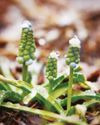
Backyard Tornado
\"HE WHO SEARCHES FOR SPRING WITH HIS KNEES IN THE MUD FINDS IT, IN ABUNDANCE.\" - ALDO LEOPOLD
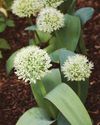
Front-of-the-Border "Wow!" Power
When it comes to easy-care plants that bring a lot of punch to the border, 'Ivory Queen' Turkestan onion should be near the top of your shopping list.
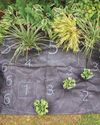
GARDEN ESSENTIALS
MAKE GARDENING EASIER THIS YEAR
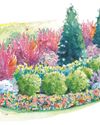
Elevate an Evergreen Hedge
Although an evergreen hedge looks suitable all year on its own, it's perfectly poised to become something even greater: a backdrop to a garden where flower after flower will unfurl with such drama, you just might find yourself stepping outside and offering your applause.

One Garden, Two Worlds
In this colorful and welcoming garden, sunny, flower-filled front borders transition to a shady backyard hideaway.
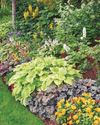
on edge
Four garden pros share their go-to edging techniques.

DIANTHUS
Add fragrance, vivid color and timeless charm with this reliable, cold-hardy perennial.

2025's Best New Plants!
Are you ready to start planning for next year's garden? A few new plants might be just what you need to bring those dreams to reality.
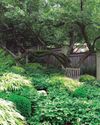
Solve Garden Problems With Ground Covers
Are you tired of coaxing turfgrass to grow in difficult spots? In her book Groundcover Revolution, Kathy Jentz says that ground covers can be the solution to these struggles.

The Romance of Spring
With the arrival of spring, emerging perennials fill the garden with soft texture, restoring life to the harsh, often barren landscape of winter.